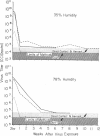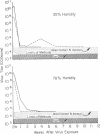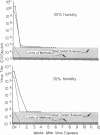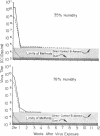Abstract
The length of time that poliovirus could be recovered from wool gabardine and blanket, and from cotton sheeting, terry cloth, and knit jersey fabrics was determined under conditions of controlled temperature and humidity (25 C in 35 and 78% relative humidities). Three types of exposure of the fabrics to viruses were used: direct contact, aerosol, and virus-containing household dust having a high content of textile fibers. When held in 35% relative humidity, virus persisted for 20 weeks on wool fabrics, but only 1 to 4 weeks on cotton fabrics. At this relative humidity, virus titers on wool fabrics decreased rapidly to low but detectable levels which persisted for long periods of time, whereas in 78% relative humidity the decrease in virus titer was less rapid, but the period of viral persistence was shorter. Generally, virus titers on cotton fabrics held in both relative humidities decreased exponentially to an undetectable level. The method of exposure to virus had a definite effect on the duration of viral persistence on a given fabric. Virus contained in household dust was least stable.
Full text
PDF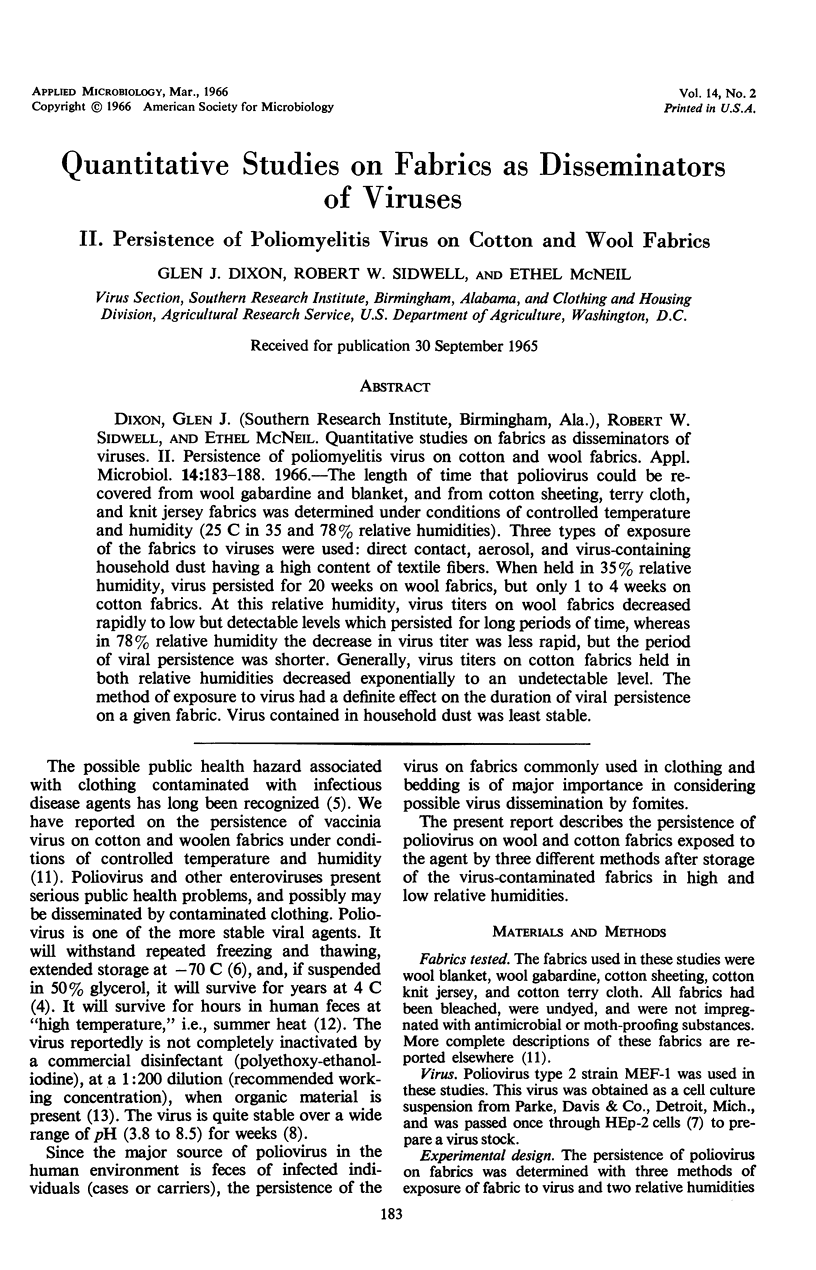
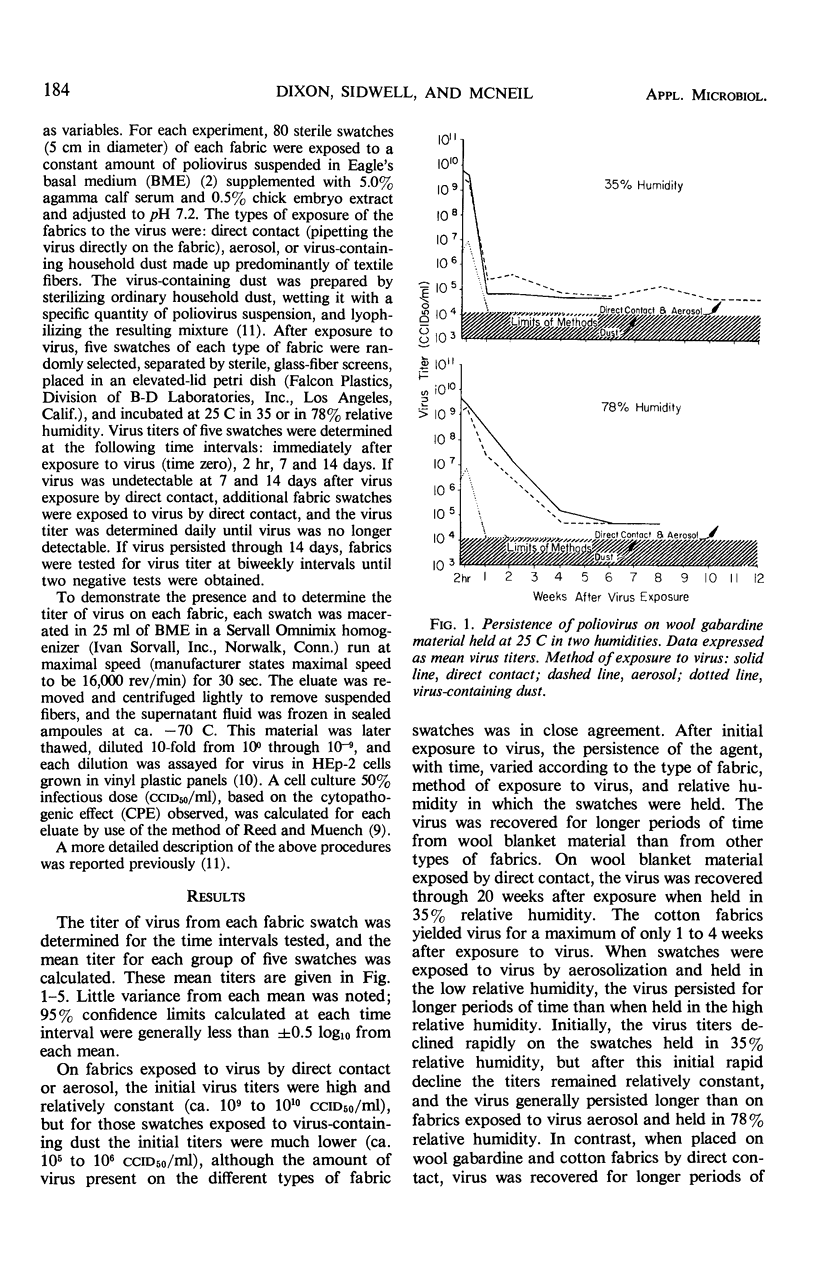
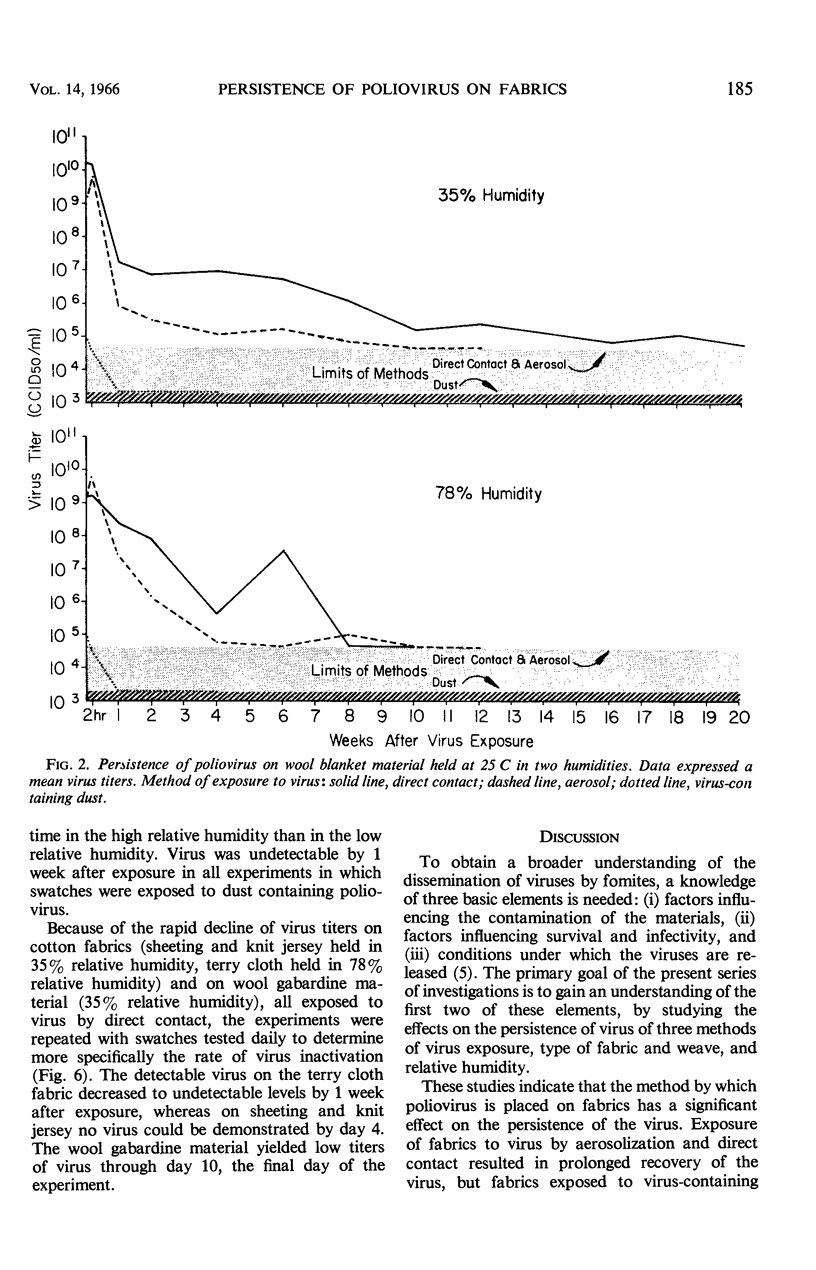
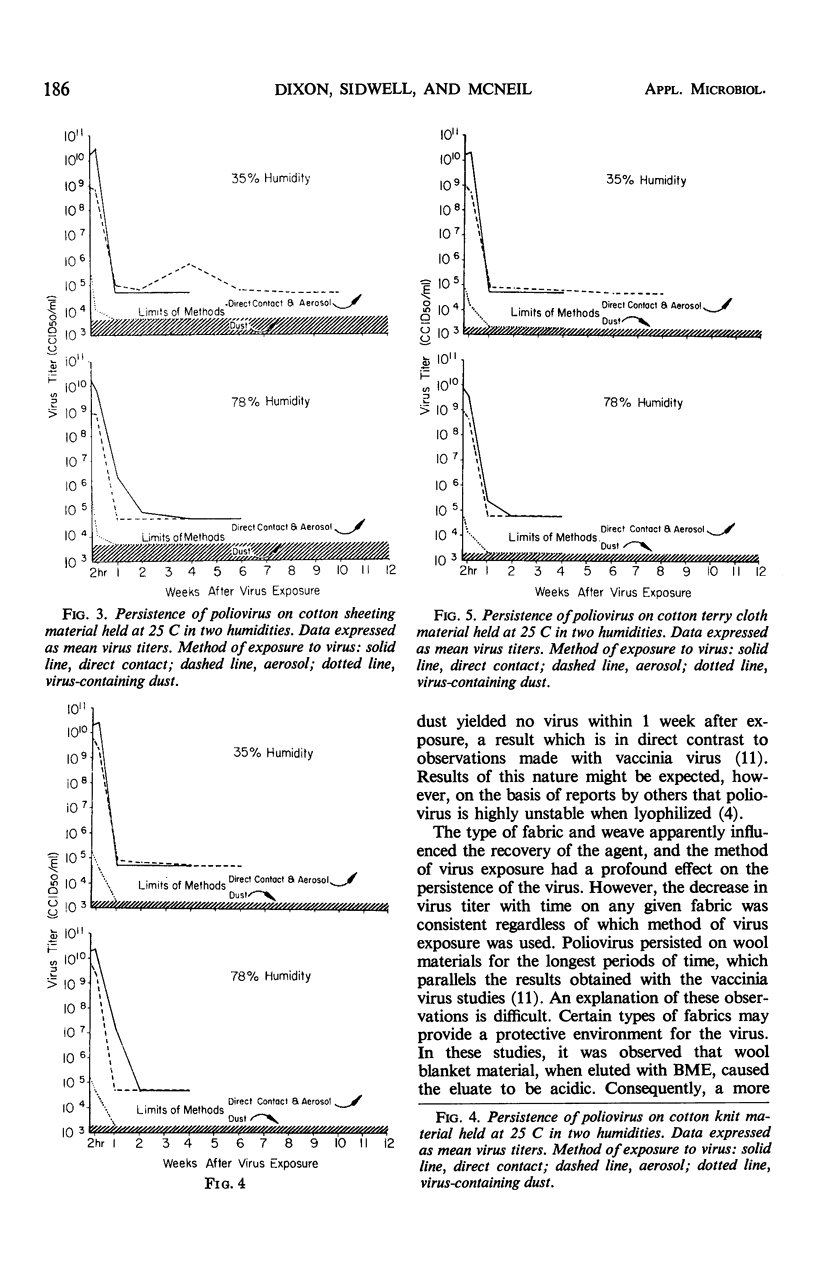
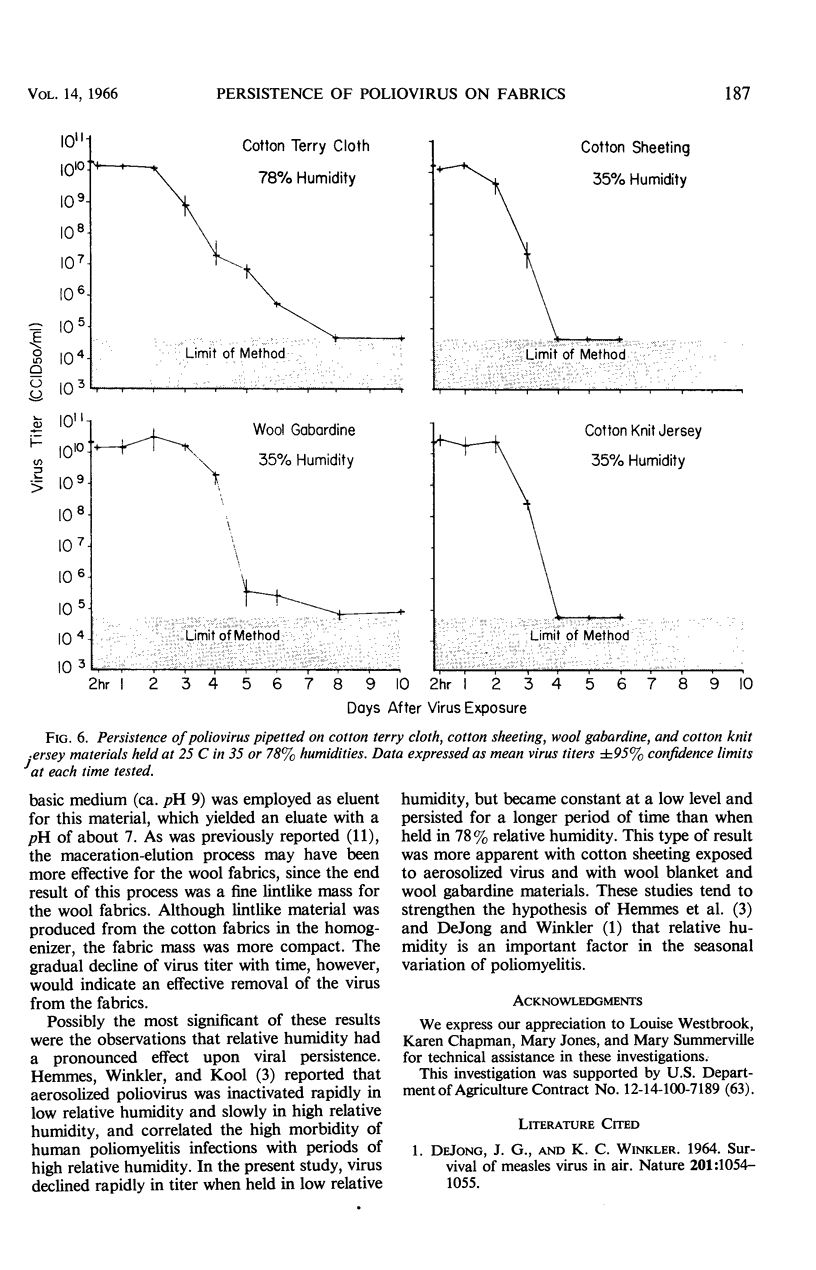
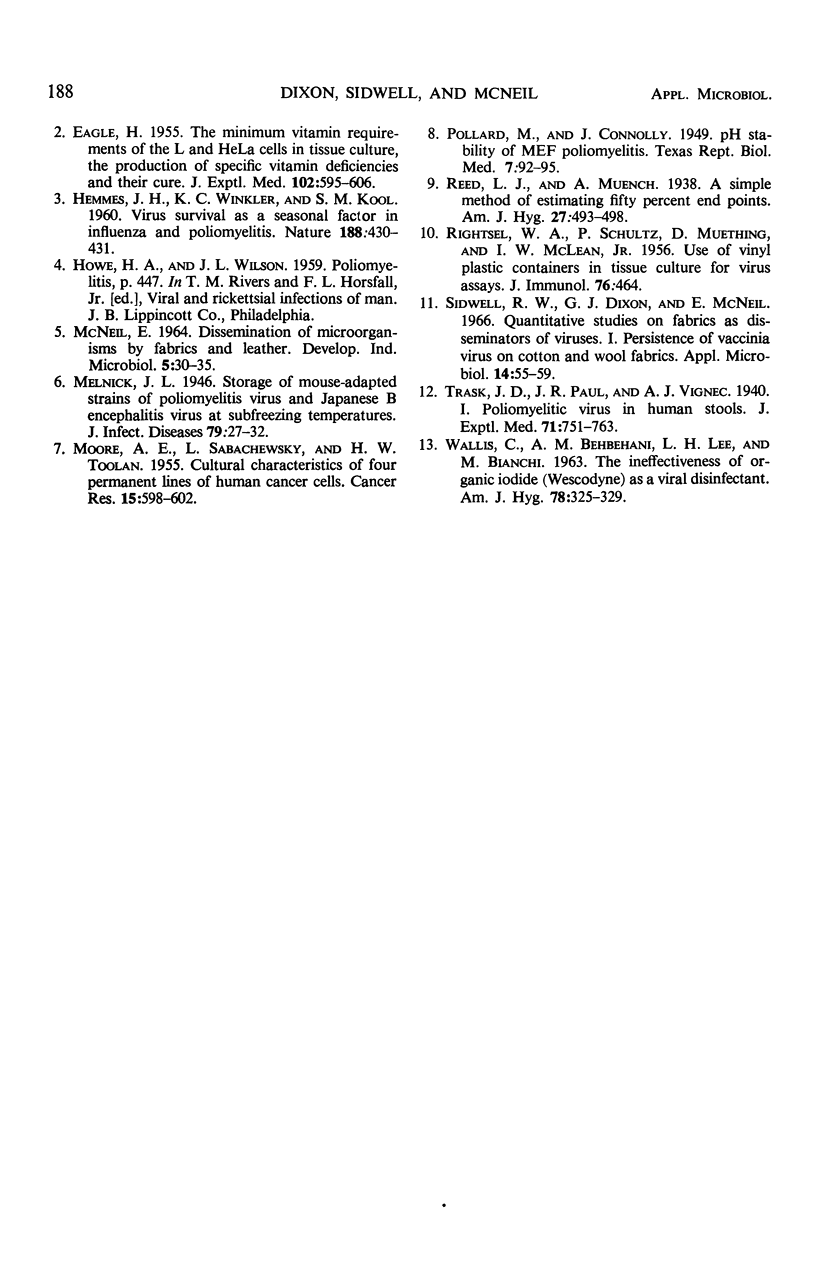
Images in this article
Selected References
These references are in PubMed. This may not be the complete list of references from this article.
- DE JONG J. G., WINKLER K. C. SURVIVAL OF MEASLES VIRUS IN AIR. Nature. 1964 Mar 7;201:1054–1055. doi: 10.1038/2011054a0. [DOI] [PubMed] [Google Scholar]
- EAGLE H. The minimum vitamin requirements of the L and HeLa cells in tissue culture, the production of specific vitamin deficiencies, and their cure. J Exp Med. 1955 Nov 1;102(5):595–600. doi: 10.1084/jem.102.5.595. [DOI] [PMC free article] [PubMed] [Google Scholar]
- HEMMES J. H., WINKLER K. C., KOOL S. M. Virus survival as a seasonal factor in influenza and polimyelitis. Nature. 1960 Oct 29;188:430–431. doi: 10.1038/188430a0. [DOI] [PubMed] [Google Scholar]
- MOORE A. E., SABACHEWSKY L., TOOLAN H. W. Culture characteristics of four permanent lines of human cancer cells. Cancer Res. 1955 Oct;15(9):598–602. [PubMed] [Google Scholar]
- RIGHTSEL W. A., SCHULTZ P., MUETHING D., MCLEAN I. W., Jr Use of vinyl plastic containers in tissue cultures for virus assays. J Immunol. 1956 Jun;76(6):464–474. [PubMed] [Google Scholar]
- Sidwell R. W., Dixon G. J., McNeil E. Quantitative studies on fabrics as disseminators of viruses. I. Persistence of vaccinia virus on cotton and wool fabrics. Appl Microbiol. 1966 Jan;14(1):55–59. doi: 10.1128/am.14.1.55-59.1966. [DOI] [PMC free article] [PubMed] [Google Scholar]
- WALLIS C., BEHBEHANI A. M., LEE L. H., BIANCHI M. THE INEFFECTIVENESS OF ORGANIC IODINE (WESCODYNE) AS A VIRAL DISINFECTANT. Am J Hyg. 1963 Nov;78:325–329. doi: 10.1093/oxfordjournals.aje.a120351. [DOI] [PubMed] [Google Scholar]



